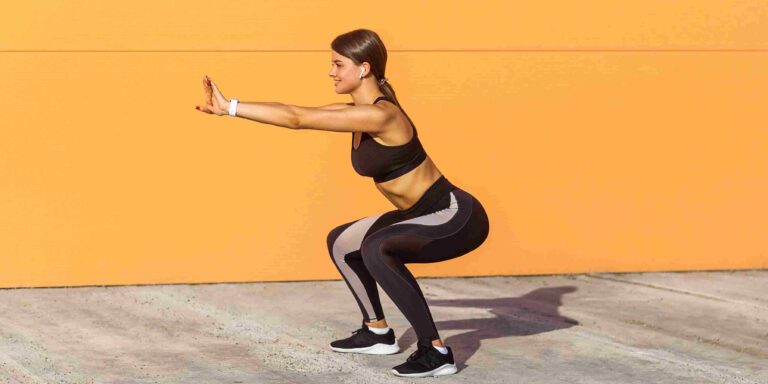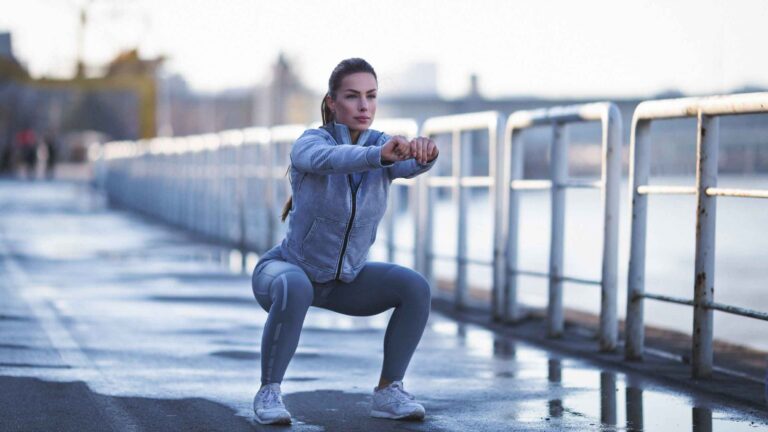You might stop yourself mid-activity because squatting hurts your knees, whether you’re squatting as part of your exercise regimen or crouching to reach something on a lower shelf.
Squatting may make you hurt for a variety of causes, from a recent injury to a long-term ailment brought on by aging. See your doctor to find out what’s wrong if your discomfort worsens while you squat or if it has turned from a few little twinges to a more severe, stabbing ache.
Yet, individuals who squat incorrectly as well as those who already have a knee injury or disease may have knee pain.

CAUSES OF KNEE PAIN DURING SQUATTING
If you exercise incorrectly, your form when squatting will be incorrect. Standing with your feet shoulder-width apart, bend your knees as if you were going to sit in an unseen chair to perform a proper squat. Instead of your toes, keep your knees above your heels. Never stoop lower than knee height; instead, lower oneself to a comfortable level. Press your heels into the ground to stand up again. For balance, extend your arms in front of you.
The front of the kneecap may hurt from the runner’s knee, also known as patellofemoral pain syndrome, especially during squatting. Arthritis may result in knee discomfort, stiffness, and edema, making it uncomfortable to bend or squat.
Bending and squatting may hurt if you have a knee injury, such as a sprain, tear, or tendonitis.
TIPS TO SQUAT WITHOUT EXPERIENCING KNEE PAIN
Fortunately, there are techniques to alter your posture so that you can keep working out or reach items in low drawers without getting hurt. Try the following suggestions :
- Lay flat on your back and raise one leg straight in the air, being careful not to lock your knee, or to stretch your hamstrings. Put your hands on the raised thigh’s back and slowly draw it towards you until you feel a slight tightness. Repeat with the other leg after holding and before releasing.
- Standing with your feet shoulder-distance apart will help you stretch your quadriceps. Grab your left foot with your left hand and gently extend your left knee so that the foot is behind you. Your heel should now be close to your buttocks. Avoid locking the other knee. Repeat the process with the right leg. Hold. Lean on a counter for support if trying to balance on one foot becomes challenging.

- The Arthritis Foundation advises leaning against a wall with your back flat, your feet shoulder-width apart, and your heels 18 inches away. Instead of your toes, keep your knees precisely above your heels. Squat as low as you can comfortably without bringing your buttocks below knee height while you lean back against the wall. Make sure your knees and heels remain in alignment. Press with your heels, not your toes, to stand back up.
- Whether you kneel down to reach for pans in the kitchen or files at work, your knees might not hurt as much if you don’t put as much weight on them.
- Pain can frequently be reduced by wrapping the knee in a bandage, using a cold compress, taking painkillers, taking a break from activities, or resting.
Visit Specialty Care Clinics to see a doctor to make sure that there isn’t an underlying problem causing this symptom if they continue to have knee discomfort during or after squatting. For consultation make an appointment at (469) 545-9983.
